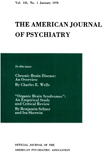Abstract
The basic psychological rationale of handwriting analysis is rooted in the essential self-consistency of human behavior and more specifically in the fact that handwriting is a product and, at the same time, a record of highly individualized motions. The rationale is furthermore based on the existence of a correlation between our motions and emotions. The individual's intrapersonal consistency in hand writing is discussed and 3 methodological approaches to the analysis of handwriting are, proceding at different levels, distinguished, with their findings merging into one final analysis.
1. Handwriting analysis as a situation test: the individual's behavior and its dynamics in the structured situation of handwriting are analyzed, the structure being provided by the contemporary national alphabet and the requirement for a minimum legibility. As an example of the numerous possibilities of interpretation, the dynamic significance of the application and distribution of pressure is discussed.
2. The graphic character of the activity provides numerous possibilities for symbolic expression. As an example of this, the symbolic expression of the self-concept is discussed and demonstrated by samples.
3. Physiologically, handwriting is the result of muscular contraction and release. Disturbances in the quantity, direction, and balance between contraction and release, and the resulting rigidity and deterioration of rhythm in psychopathology are discussed and a diagnostic indication between cyclical and schizophrenic disorders is pointed out.
It should be stressed that many of the potentialities of handwriting analysis are still in their early development, though some of them have been more fully investigated than can be discussed within the limits of this paper.
Two specific results of the uniquely easy availability of the test material should at least be mentioned. One is the preventive value. Often a casual inspection of a handwriting might cause justified suspicion and result in further psychiatric and psychological investigation.
The other, and even more singular, potential was purposely hinted at by introducing the writing of historical personalities. Those who lived long before other psychological tests could be administered left behind them in their handwriting a record which provides the possibility of a test-based psychological evaluation. The clinician can, therefore, be helped to a more objective understanding of such figures in a patient's life who have long been deceased. Handwriting analysis opens new vistas to the understanding of men and women in history.

